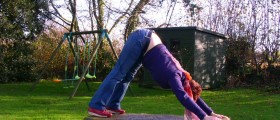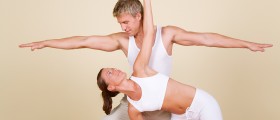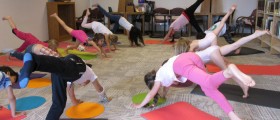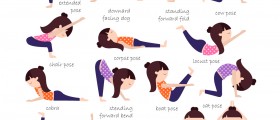
Yoga is a spiritual practice established before 5000 years in India. Today, most of us think about yoga as of a light physical exercise that involves stretching and holding certain postures in order to build balance, endurance and strength. However, yoga does not include only postures but also breath control, meditation, and in some advanced stages even exploration of different realms such as moral codes, self-purification, control of the senses, focus on intention, and contemplation. The name of this discipline is derived from Sanskrit language, and often translated as joining, uniting, union, and conjunction.
Partner Yoga
Partner yoga is one of the possible types of yoga based upon the basic principle of this ancient discipline – the union. The goal of partner yoga practice is to connect with ourselves and with partners, and realize the fact of essential unity with every living being in the universe. During the partner yoga class, partners will face many challenges and will need to support one other, examining and forming healthy relationship. This type of yoga is especially suitable for intimate partners, but people engaged in all different kinds of relationships can easily practice it: parents and children, friends, corporate groups, etc.
Benefits of partner yoga exercises
The most important thing about partner yoga is that it truly bonds people. Intimate partners will typically benefit from higher levels of trust and intimacy. Parents practicing yoga with their children will spend some quality time together, have a lot of fun and introduce their kids to the importance of healthy living and physical activity. The best thing about partner yoga is that it is absolutely non-competitive but able to build intimacy, and improve the levels of trust between partners. Partners can also help each other in more advanced postures or engage together in guided meditation, which is also a part of yoga.
Partner yoga postures
The simplest of all partner yoga postures is known as the Triple Hill. The posture is performed by stretching out shoulders and hamstrings while touching partner's palms above the head, while being slightly bent forward. Partners should try to remain focused while staring at each other’s eyes.
Tree Yoga Pose, a great balancing posture, can also be performed while keeping a focal point on the partner. This pose focuses on mental agility and requires more concentration than physical stretch. To take this posture, place the opposite foot on the inner thigh, as high as possible, raise your arms overhead, with palms touching and elbows straight. Try to remain in this posture for 30 minutes, while focusing on the partner.
Triangle pose includes facing one another while performing this pose. This is one of the commonly practiced poses and a great stretch. Extend your legs three-to-four feet apart, put the arms parallel to the floor, palms facing down. Left foot is turned slightly inward, the right foot is squared. On the exhale, extend the torso over to the right, bending at the hip. Arm is straight, and right hand is at the left leg or supporting on the block. Hold the posture for 30 seconds while looking at the partner.

















Your thoughts on this
Loading...